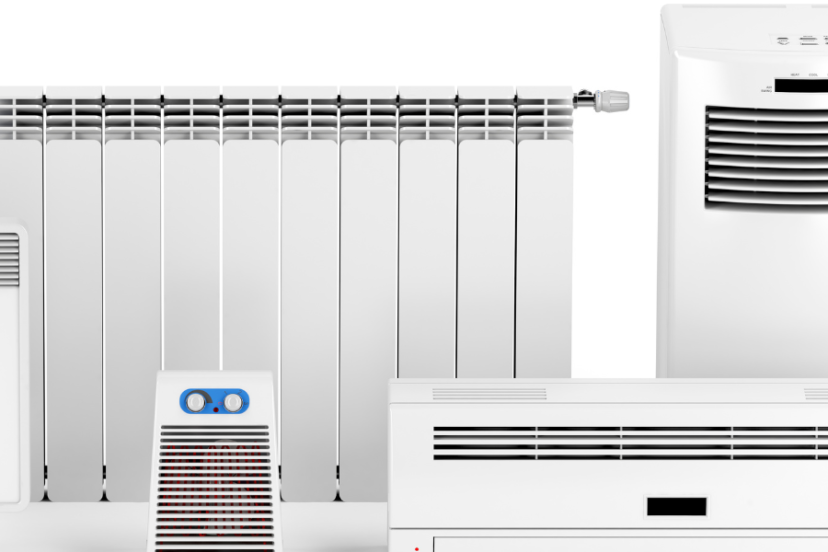How To Heat A Garage
As an Amazon Associate, I earn from qualifying purchases, at no additional cost to you. Disclaimer
I’m thrilled to share with you today my insight on ‘How To Heat A Garage’. Have you ever found yourself shivering while trying to work, or simply relax in your garage during winter? Well, who hasn’t? But you don’t need to suffer these bone-chilling low temperatures any longer. In this enlightening post, I’m going to unravel some effective and energy-efficient ways that I’ve discovered for heating a garage. From insulation techniques to garage-amiable heaters, allow me to guide you through transforming your icy-cold garage into a warm, cozy space.
Understanding the Importance of Heating a Garage
Garages are usually not as well-insulated as the rest of our homes, so they can become uncomfortably cold, especially in the heart of winter. Heating a garage can provide several benefits, some of which you may have never considered.
Protection of Belongings
If you, like many others, use your garage as a storage space, then warming it up could protect your belongings from the harsh effects of cold weather. Certain items, particularly those made of metal or liquid materials, can be adversely affected by frost. Electronics may malfunction, metals may rust, and liquids may freeze and burst if left in near-freezing temperatures. Thus, heating your garage can shield these items and help extend their useful life.
Creation of Habitability
Apart from storage, a garage can double as a functional work or hangout space with the inclusion of heat. Whether you’re using it as a workshop, home gym, or a place to unwind, a warm and properly heated garage can provide a more comfortable and inviting environment. Imagine working on your newest project or lifting weights in a warm and cozy garage. Sounds wonderful, doesn’t it?
Prevention of Car Trouble
A car stored in a cold garage can encounter a multitude of issues like thickened engine oil, deflated tires, and reduced battery life. These can lead to inconvenient mornings when your car refuses to start. Heating your garage to a moderate temperature can deter a lot of these common cold-related car problems which makes it beneficial for your vehicle in the long run.
Assessing Your Garage’s Insulation
Before you get started on heating your garage, it’s essential to understand the state of your garage’s insulation. Insulation plays a crucial role in maintaining warmth.
Inspection of Current Insulation
Firstly, you need to inspect what kind of insulation, if any, currently exists in your garage. Examine the walls and roof, as they are the main routes of heat escape. The insulation should be evenly distributed without any noticeable gaps.
Understanding Types of Insulation
There are various types of insulation available, including fiberglass, mineral wool, cellulose, and spray foam. Each comes with its own pros and cons and levels of insulation effectiveness, known as R-values. Fiberglass, for instance, is inexpensive and easy to install, but isn’t as effective in insulating as spray foam. Do your research to find out which type would work best in your garage.
Checking for Gaps and Leaks
Even with the best insulation, heat can escape through gaps and leaks. Check the garage doors, windows, and any vents or ducts for drafts. These are indications of potential heat loss and should be sealed to optimize the garage’s insulation.
Choosing the Right Heating Method for Your Garage
Once insulation is sorted, it’s time to select the heating method that best suits your garage. Several factors should guide your decision.
Considering Garage Size
The size of the garage is a significant factor in determining the most appropriate heating option. A small, single-car garage might only require a small, portable heater, while a larger, multiple-car garage might be better served by a more powerful, permanent heating system.
Budgeting for a Heating System
Heating systems come at different price points, ranging from cost-effective portable heaters to more expensive, central heating systems. Besides installation costs, consider additional costs like maintenance and energy usage to ensure the system fits within your budget.
Thinking About Energy Efficiency
You should also consider how energy-efficient the heating option is. Electric heaters can be cost-effective for smaller spaces, while an infrared heater is great if you’re after efficiency. It’s always beneficial to choose a system that optimizes heat output while minimizing energy consumption.
Installing Convection Heaters
Convection heaters are a popular choice for garages due to their efficiency and ease of use.
Benefits and Drawbacks
Convection heaters work by heating the air in a space, which then rises and distributes the heat evenly. They are typically more energy-efficient for larger spaces, making them a good option if you have a big garage. However, they do tend to make the air dry and may take longer to heat a space.
Installation Process
Installing a convection heater can be as simple as plugging it into an electrical outlet, though some models require professional installation. It’s important to position the heater where its warmth can spread evenly and it’s not at risk of being knocked over.
Safety Precautions
Convection heaters can get very hot, so ensure they are out of reach of children and pets. They should also be placed far away from flammable objects to prevent any fire hazards.
Installing Infrared Heaters
Infrared heaters are another viable option for heating a garage.
Benefits and Drawbacks
Unlike convection heaters, infrared heaters directly heat objects and people, providing almost instant warmth. They are typically more energy-efficient and don’t dry out the air. However, their downside is that they work best in smaller spaces and require a direct line of sight to heat effectively.
Installation Process
Installation of infrared heaters is relatively straightforward and mostly requires being mounted onto a wall or ceiling. However, high-powered models might need professional installation.
Safety Precautions
When using infrared heaters, ensure they are safely secured to prevent any accidents. Avoid placing them near flammable materials and always follow the manufacturer’s safety guidelines.
Installing Electric Heaters
Electric heaters are a common choice for those who seek easy and quick warming solutions for their garage.
Benefits and Drawbacks
Electric heaters are generally compact, portable, and easy to use. They can heat up rather quickly and are ideal for smaller spaces. However, they may not be as energy-efficient as other options, which could lead to higher energy bills.
Installation Process
Installing electric heaters usually involves simply plugging them into an outlet. Some models might require a special outlet or a dedicated electrical circuit, so it’s essential to check the specifications before installation.
Safety Precautions
To prevent any accidents, electric heaters should never be left unattended. Furthermore, they should be positioned in safe places away from any flammable material and kept out of reach for kids and pets.
Installing Propane Heaters
If electricity isn’t your preferred choice, you might want to consider a propane heater for your garage.
Benefits and Drawbacks
Propane heaters are powerful and can heat large spaces quickly. They are portable and do not depend on electricity. However, they require proper ventilation to prevent the buildup of harmful gases, and they can be a fire hazard if not handled carefully.
Installation Process
Installation varies among different models. Some require being connected to a propane cylinder, while others might need a gas line installed. If you’re unsure, it’s best to hire a professional to install it correctly.
Safety Precautions
Always ensure there is enough ventilation when using a propane heater. Also, keep it away from any flammable substances and follow safety instructions diligently.
Ensuring Proper Ventilation in Your Garage
Ventilation plays a vital role when it comes to heating your garage. It balances the indoor air quality and helps regulate the heat.
The Role of Ventilation in Heating
Effective ventilation allows a steady replacement of air, reducing moisture and improving the quality of air. This prevents the buildup of any harmful gases, reduces condensation, and creates a more comfortable environment.
Considering Ventilation Options
Options for garage ventilation range from simple solutions like opening windows or using portable fans to more complex systems like installing exhaust fans or vents. The best option for you would depend on your garage’s needs and your budget.
Maintaining Your Garage Heating System
Proper maintenance is key to ensuring your garage stays warm throughout the year.
Periodic Checks and Balancing
Routine check-ups can help keep your heating system running smoothly. Monitor for any changes in heating performance and adjust settings if needed.
Cleaning and Clearing Dust
A clean system functions at its best, so regular cleaning should be a priority. Clear out any dust or debris from your heater to prevent it from clogging up and reducing performance.
Addressing Minor Repairs Immediately
When a minor issue pops up, attending to it promptly can prevent it from escalating into a bigger, more expensive problem. If you are not sure how to fix an issue, consult a professional technician.
Considering Additional Tips to Keep Your Garage Warm
Beyond heating systems and insulation, there are other ways to help keep your garage warm and comfortable.
Using Insulated Doors and Windows
Installing insulated doors and windows can significantly reduce heat loss, especially if your garage door opens frequently. They can provide a barrier against cold air, improving your garage’s overall energy efficiency.
Using Thermal Curtains or Blinds
Thermal curtains or blinds are an affordable way to further insulation. These curtains can help keep warmth in and cold out, particularly when used on any windows in your garage.
Utilizing Floor Heating Mats
Floor heating mats are another excellent solution for warming up garages. These mats are designed to provide heat from the floor up, making your garage much cozier. They can be particularly useful if you use your garage as a workspace or gym.
There you have it, a comprehensive guide on how to heat a garage! Choose the best heating options suited for your needs, establish good ventilation, and ensure proper insulation for an efficiently warmed garage. As always, prioritize safety precautions, and you are off to a warm and cozy garage all year round.
Disclosure: As an Amazon Associate, I earn from qualifying purchases at no additional cost to you.








